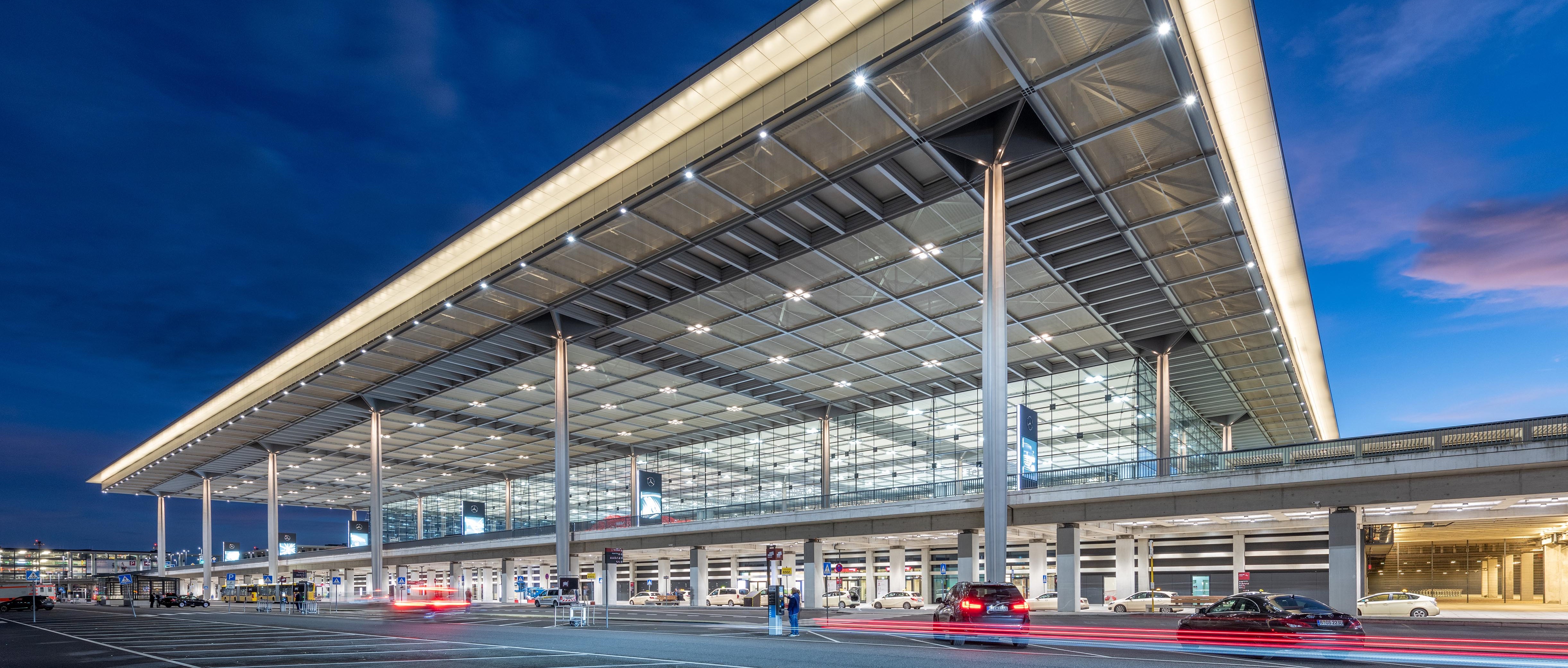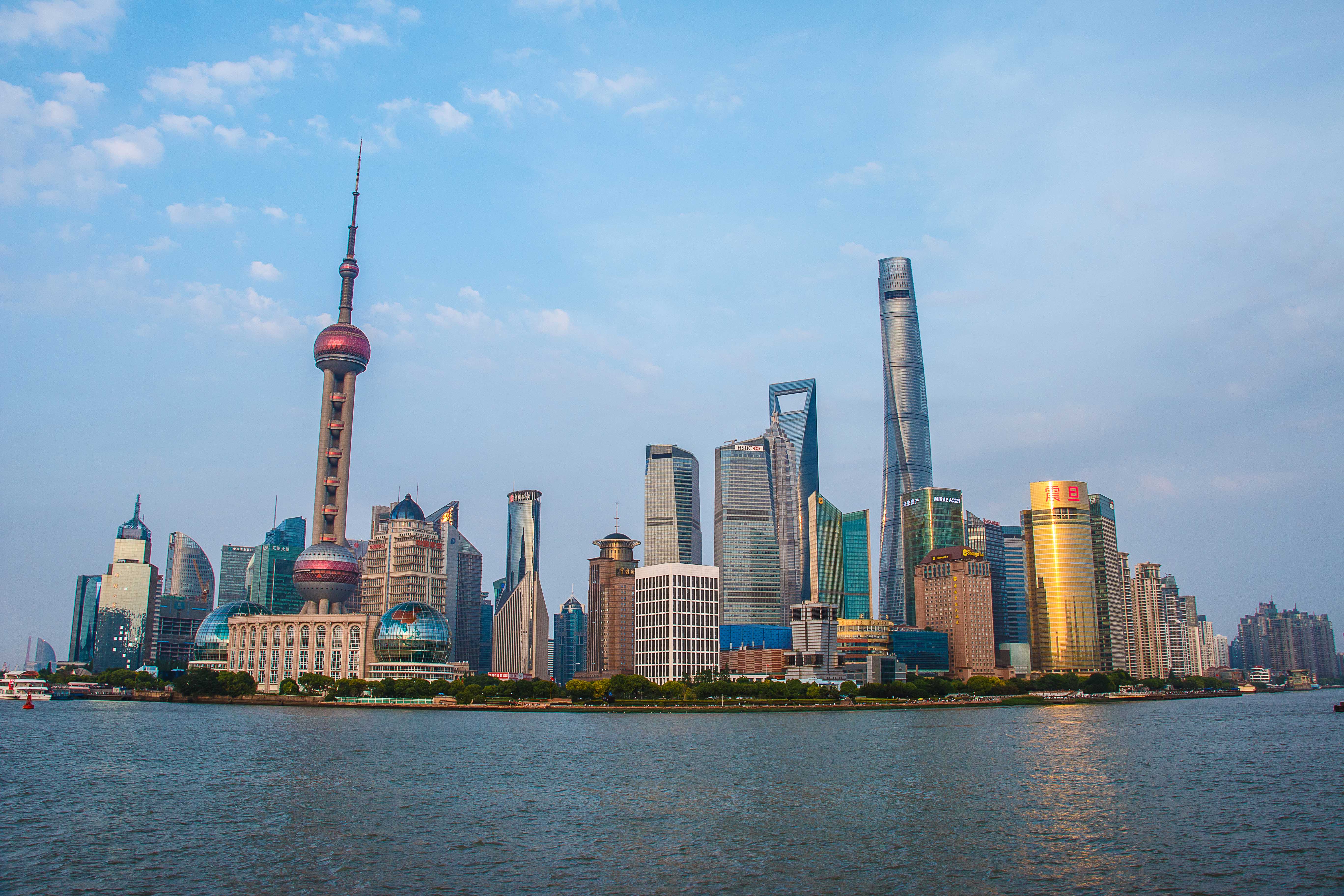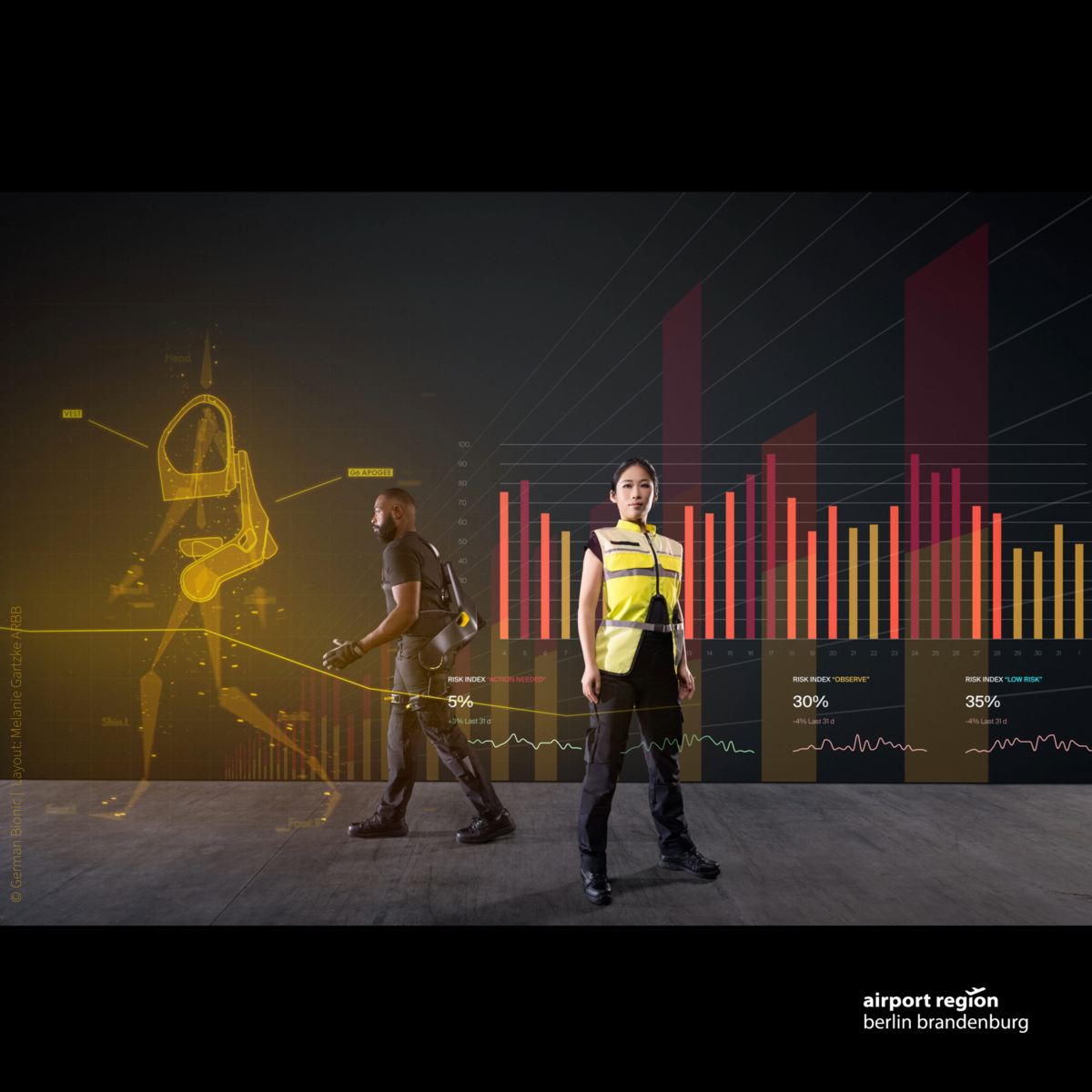Ideal location assets and innovative growth
A dynamic economic region stretching from the busy Berlin environs to the south of the city and right up to the municipalities around Berlin Brandenburg Airport (BER) – this is the Airport Region Berlin Brandenburg. Its excellent infrastructure, first-class business locations, innovative technology centers and motivated skilled workforce make it an ideal company location. Be it global corporations, medium-sized companies or startups – the company landscape of the Airport Region Berlin Brandenburg is just as diverse as the industries represented here.
Dynamic economic development
The Airport Region Team is a cooperation of the two business development agencies, Berlin Partner for Business and Technology and the Economic Development Agency Brandenburg (WFBB) and is focused on economically strengthening the region around Berlin Brandenburg Airport (BER). With headquarters directly at BER Airport, we are the first point of contact for companies interested in opening new branches or offices in the region.
Our close cooperation with the respective industry experts of each economic development agency means that we can support you with all your questions regarding company expansions and settlements.
AI-supported exoskeletons: smart help for physical exertion
"We need to get used to the idea that we are increasingly becoming pilots in an AI cockpit, and exoskeletons are part of that smart system." (Norma Steller, CPO German Bionic)
Every day, people in fields such as crafts, logistics and geriatric care are faced with the challenge of coping with enormous physical exertion. The consequences are often an excessive workload and back pain. German Bionic has developed an innovative solution to counteract these strains: AI - powered exoskeletons. These technological assist devices, based on machine learning and artificial intelligence, have the potential to permanently change the work environment in these industries.
The interview with Norma Steller, Chief Product Officer (CPO) at German Bionic, reveals how she is driving the development of exoskeletons and what innovative technologies and customization options are available to meet the individual needs and requirements of employees.
As Chief Product Officer at German Bionic, you play a key role in the development of exoskeletons. How did you come to this exciting field and what motivates you most about your work?
I have been working on the German Bionic team for just under five years. My primary responsibility is the development of the deployed software. This includes the in-house developed exoskeleton control system, German Bionic OS, the cloud platform German Bionic IO, and the AI-based Smart Safety Companion, which provides occupational safety recommendations to users in real time. My motivation, and that of many of my colleagues, is relatively simple: I want people to no longer be restricted in their lives and participation due to physically difficult work and the associated health problems. In essence, I want people to have fair conditions - everywhere. For me, exoskeletons are a solution to support physically working people in a meaningful way. It is also an exciting technological field in which I and my colleagues have been doing interdisciplinary pioneering work for years.
In mid-June, you will be presenting a new solution for the healthcare sector at VivaTech in Paris. What will you pack and why is a visit to your booth worthwhile?
We will be presenting our new Apogee+ in Paris. This is a product iteration of our current exoskeleton model, "Apogee," which we introduced at CES in Las Vegas in January. The Apogee+ has been further developed specifically for applications in the field of geriatric care and nursing. Visitors to Europe's largest tech show will be able to experience how easy it is to keep people in care professions healthy by providing them with an intuitive and meaningful tool. As a reminder, we urgently need solutions in care now, as according to a recent PWC study, there will be a shortage of 1.8 million caregivers by 2035. It now depends on each and every one of the employees we keep fit, as the stresses caused by the worsening shortage of skilled workers continue to increase, and this poses the risk of even more staff dropping out. We know from a joint research project with the Charité in Berlin that the stress levels in this occupational group are particularly high. Various hospitals and care facilities have also signaled to us that they are desperately waiting for practical technological support for their employees.
German Bionic is known for its smart exoskeletons that are supported by Artificial Intelligence and Machine Learning. How do these smart tools differ from other exoskeletons on the market and what are the benefits for the employees who use them?
Basically, there is our approach and the field of other vendors. The field largely consists of so-called passive exoskeletons, meaning mechanical-analog devices without AI or active drives. This approach is possible, but from our point of view it is always a compromise.
Why is that?
Users have to accept restrictions in terms of comfort - our exoskeleton adapts to the user. Of course, a simple design with spring balancers cannot do that. The second limitation relates to power: We give users extra power through our powered power suits. Passive exoskeletons can only redistribute forces. The bottom line is that our users do not have to compromise. That's why we rely on intelligent controls that allow our exoskeletons to adjust automatically to the users, and we rely on active support, in other words robotic propulsion, to conserve body energy.
The integration of exoskeletons into the work processes of companies requires careful planning and adaptation. How do you ensure that the exoskeletons are suitable for all users and what are the customization options?
As with all products, it is important to understand the users and their needs well and to work out the problem that needs to be solved. We know that our users have multiple moments of stress in their daily work, and that's why the exoskeleton has to be in the background and perform many tasks autonomously. You don't have to be an ergonomics expert to use German Bionic's products. We rely on intuitive interfaces (as we know them from the smartphone), familiar textiles (vest and backpack system) and software-supported learning phases via on-boarding assistants, in that the exo regulates itself. Initially, the development of the exoskeletons is not designed for customers or use cases, but for the users themselves. Which posture do we want to moderate (make more ergonomic), which support parameters are responsible for a good wearing experience (support, force curves, sensitivity) and which of them do we let the user adjust himself? All this is done automatically by our system.
What technological and regulatory challenges do you face in the development of exoskeletons and how do you deal with them?
In the past few years, interrupted supply chains have made development difficult. We use a lot of special components (many from the automotive sector) and therefore it was not always possible to develop prototypes with the desired components. We had to be flexible and creative to achieve the desired goal. In regulatory terms, there are no hard hurdles. Product approval and safety certification are central to our development work. In fact, we would like to see the entire exoskeleton industry become more active there. At present, for example, we are the only manufacturer with TÜV certification in the market.
This is because exoskeletons should not only be non-restrictive, they should above all not cause any additional hazards (e.g. crushing hazards, which we observe with some passive systems). That is why we support initiatives to develop our own standards and approval requirements for exoskeletons and participate in medical studies that examine the effectiveness of exoskeletons in more detail and over the long term.
The future of human augmentation in the workplace is promising. How do you see the potential for exoskeletons and other human augmentation technologies in the future, and what impact will they have on the workforce?
The fact that we will have significantly more support in the future than our ancestors is already becoming apparent. Intelligent exoskeletons support physically working people in all areas by ensuring that health and safety in the workplace can be provided everywhere by wearing the tool for this on the body. Exoskeletons make us stronger and give us more stamina. Generative AI applications will ensure that we can work even more "in parallel," making us even more productive. Still other AI applications will take over task planning and, for example, manage calendars and schedule appointments. We need to get used to the idea that we are increasingly becoming pilots in an AI cockpit, and exoskeletons are part of that smart system.
How did you decide to locate your research and development in Berlin? How do you see your role in the capital's tech ecosystem and its prospects?
Berlin has a wonderfully dynamic ecosystem where there is a certain openness to ideas. You find like-minded people who want to go beyond the status quo and seek new solutions. We like that a lot. As a hardware company, we're still pretty much aliens. We show that you can be not only successful with hardware, but that you can also develop it dynamically, leanly and quickly.
The interview was conducted by colleagues from #ai_berlin, June 12, 2023; Link: https://ai-berlin.com/de/blog/article/norma-steller-cpo-german-bionic
For more information on the economic development of growth industries in the region and on economic and technology support for companies, investors and scientific institutions, please contact:
Melanie Gartzke I melanie.gartzke(at)airport-region.de

Jorge Guillen | Pixabay
Interviews with the partners of our brand alliance.
Our brand alliance partners, experienced and long-standing players in the Airport Region Berlin Brandenburg, gave us short interviews in which they explained their views on the region's development potential and its locational advantages. They also gave us an insight into their future projects and plans.

Anke Müller
Berlin Brandenburg Airport (BER) is the heart of the Airport Region Berlin Brandenburg and its gateway to the world. Many companies consider the direct connections between economic markets and growth industries as significant success factors and location assets. With flights to over 130 destinations the international BER airport connects the capital region with cities in Europe, Asia, and North America. Not least it offers shorter flight times to Asian destinations compared to e.g. Paris and London.
In addition to our flight route map, you will find a PDF list of all current flight connections.
Note: All information without warranty










![[Translate to Englisch:] [Translate to Englisch:]](/fileadmin/user_upload/Bilder/Startseite/Gebaeude_Airport_Region.jpg)


